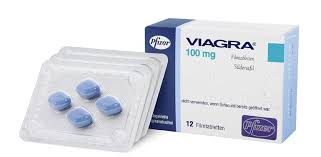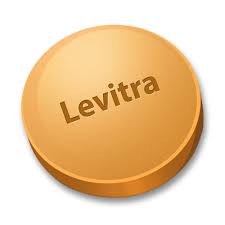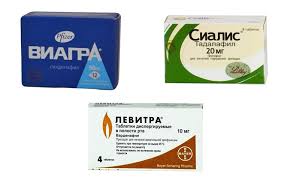
Tretinoin Gel: A Comprehensive Guide
Tretinoin Gel is a widely recognized treatment in dermatology, primarily used to address acne and signs of skin aging. As a derivative of Vitamin A, it promotes cell turnover and aids in the prevention of clogged pores. In this article, we'll delve into the benefits, usage guidelines, and considerations to keep in mind when using Tretinoin Gel. For more information on where to purchase, you can visit Tretinoin Gel https://farmacia-facile.it/compra-tretinoin-gel-senza-ricetta/.
What is Tretinoin Gel?
Tretinoin Gel is a topical medication that belongs to a class of drugs known as retinoids. Tretinoin, also known as all-trans-retinoic acid, is a potent compound that works at the cellular level to improve skin texture and tone. It is commonly prescribed for various dermatological issues, particularly for those struggling with acne vulgaris and the appearance of fine lines and wrinkles.
How Does Tretinoin Gel Work?
The primary mechanism of Tretinoin Gel involves the speeding up of the cell turnover process. This means that it helps the skin to shed old, dead skin cells and encourages the growth of new, healthy cells. This cellular regeneration promotes smoother, clearer skin and can significantly improve the appearance of acne scars and hyperpigmentation.

Additionally, Tretinoin helps to regulate oil production in the skin and prevents the formation of comedones, which are the primary cause of acne breakouts. It also has anti-inflammatory properties that can reduce redness and swelling associated with inflamed acne.
Uses of Tretinoin Gel
Tretinoin Gel is primarily used for:
- Acne Treatment: It is effective in treating both inflammatory and non-inflammatory acne.
- Anti-Aging: It reduces the appearance of fine lines, wrinkles, and age spots by enhancing collagen production.
- Hyperpigmentation: Tretinoin can help fade dark spots and improve overall skin tone.
- Skin Texture Improvement: It promotes smoother and more even skin texture.
How to Use Tretinoin Gel
When using Tretinoin Gel, it’s crucial to follow some guidelines to ensure the best results while minimizing potential side effects:
- Start Slowly: Begin with a lower concentration of Tretinoin and apply it once every other night to allow your skin to acclimate.
- Cleanse Gently: Wash your face with a mild cleanser and pat dry before applying the gel.
- Apply a Pea-Sized Amount: Less is more; use a small amount and spread it evenly across the affected areas.
- Moisturize: Following application, wait 20 minutes and then use a non-comedogenic moisturizer to hydrate the skin.
- Sun Protection: Tretinoin can increase your skin’s sensitivity to UV rays. Always apply sunscreen during the day.

Potential Side Effects
While Tretinoin Gel is generally safe and effective, some users may experience side effects, particularly in the initial stages of treatment. Common side effects include:
- Dryness and peeling
- Redness and irritation
- Burning or stinging sensation
- Increased sensitivity to sunlight
If side effects persist or worsen, it's advisable to consult a dermatologist for guidance.
Who Should Avoid Tretinoin Gel?
Tretinoin Gel may not be suitable for everyone. It is advised that certain individuals consult with a healthcare provider before use:
- Pregnant or breastfeeding women
- Those with a history of skin sensitivity or allergies to retinoids
- Individuals with eczema or other dermatitis conditions
Conclusion
Tretinoin Gel is a powerful tool in the fight against acne and aging skin. Its ability to promote cell turnover and improve skin texture makes it a favored choice among dermatologists and patients alike. However, it requires proper usage and precautions to minimize side effects. Always consult with a healthcare professional before starting any new skincare treatment. With patience and consistency, Tretinoin can help you achieve clearer, healthier skin.
DISH OF THE DAY

Tretinoin Gel: A Comprehensive Guide
Tretinoin Gel is a widely recognized treatment in dermatology, primarily used to address acne and signs of skin aging. As a derivative of Vitamin A, it promotes cell turnover and aids in the prevention of clogged pores. In this article, we’ll delve into the benefits, usage guidelines, and considerations to keep in mind when using Tretinoin Gel. For more information on where to purchase, you can visit Tretinoin Gel https://farmacia-facile.it/compra-tretinoin-gel-senza-ricetta/.
What is Tretinoin Gel?
Tretinoin Gel is a topical medication that belongs to a class of drugs known as retinoids. Tretinoin, also known as all-trans-retinoic acid, is a potent compound that works at the cellular level to improve skin texture and tone. It is commonly prescribed for various dermatological issues, particularly for those struggling with acne vulgaris and the appearance of fine lines and wrinkles.
How Does Tretinoin Gel Work?
The primary mechanism of Tretinoin Gel involves the speeding up of the cell turnover process. This means that it helps the skin to shed old, dead skin cells and encourages the growth of new, healthy cells. This cellular regeneration promotes smoother, clearer skin and can significantly improve the appearance of acne scars and hyperpigmentation.

Additionally, Tretinoin helps to regulate oil production in the skin and prevents the formation of comedones, which are the primary cause of acne breakouts. It also has anti-inflammatory properties that can reduce redness and swelling associated with inflamed acne.
Uses of Tretinoin Gel
Tretinoin Gel is primarily used for:
- Acne Treatment: It is effective in treating both inflammatory and non-inflammatory acne.
- Anti-Aging: It reduces the appearance of fine lines, wrinkles, and age spots by enhancing collagen production.
- Hyperpigmentation: Tretinoin can help fade dark spots and improve overall skin tone.
- Skin Texture Improvement: It promotes smoother and more even skin texture.
How to Use Tretinoin Gel
When using Tretinoin Gel, it’s crucial to follow some guidelines to ensure the best results while minimizing potential side effects:
- Start Slowly: Begin with a lower concentration of Tretinoin and apply it once every other night to allow your skin to acclimate.
- Cleanse Gently: Wash your face with a mild cleanser and pat dry before applying the gel.
- Apply a Pea-Sized Amount: Less is more; use a small amount and spread it evenly across the affected areas.
- Moisturize: Following application, wait 20 minutes and then use a non-comedogenic moisturizer to hydrate the skin.
- Sun Protection: Tretinoin can increase your skin’s sensitivity to UV rays. Always apply sunscreen during the day.

Potential Side Effects
While Tretinoin Gel is generally safe and effective, some users may experience side effects, particularly in the initial stages of treatment. Common side effects include:
- Dryness and peeling
- Redness and irritation
- Burning or stinging sensation
- Increased sensitivity to sunlight
If side effects persist or worsen, it’s advisable to consult a dermatologist for guidance.
Who Should Avoid Tretinoin Gel?
Tretinoin Gel may not be suitable for everyone. It is advised that certain individuals consult with a healthcare provider before use:
- Pregnant or breastfeeding women
- Those with a history of skin sensitivity or allergies to retinoids
- Individuals with eczema or other dermatitis conditions
Conclusion
Tretinoin Gel is a powerful tool in the fight against acne and aging skin. Its ability to promote cell turnover and improve skin texture makes it a favored choice among dermatologists and patients alike. However, it requires proper usage and precautions to minimize side effects. Always consult with a healthcare professional before starting any new skincare treatment. With patience and consistency, Tretinoin can help you achieve clearer, healthier skin.

